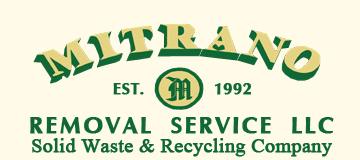 Recycling at work is easier than you might think – and it can save you money and help protect the environment at the same time.
Recycling at work is easier than you might think – and it can save you money and help protect the environment at the same time.
What can we recycle?
The first step in identifying what to recycle involves looking at what’s being thrown away. That’s as easy as taking a peek inside the wastebaskets, garbage cans, and dumpsters at your business. Typically you can recycle a variety of plastics, papers, and cardstocks (e.g., cardboard), as well as clean glass and metal containers. Contact us to learn what can be recycled in your specific location.
Of course, if your work involves more unusual waste, such as certain manufacturing or construction materials or organic waste generated by, say, restaurants or food manufacturers, that’s an entirely different recycling matter. Contact us with details and to discuss how we can help you safely and efficiently recycle those kinds of materials as well.
What will it cost?
The cost of recycling at work depends on a number of factors, including how much recyclable waste you are producing, where your business is located, and what kinds of materials you want to recycle.
Some people might say, “Why should I increase my expenses by recycling?” That’s not the right way to look at it. Ideally, you will reduce the capacity (or frequency of collection) of your trash service when you start recycling. This will help to offset the costs of recycling and may lead to significant overall savings.
How do I encourage my employees to recycle?
Clear communications are very important to ensure that people recycle and put the correct items in the correct containers if your recyclable materials require separation. Tell them why you are starting to recycle — for example, why it will save money and what the environmental benefits will be.
Here are some tips to help you get started:
- Encourage senior management to get involved. Their buy-in is important and it’s beneficial for messages to come from them.
- Information about the recycling services should be made available through your intranet (if your company has one), internal newsletters and emails, as well as, verbally and by using posters.
- Speak to cleaning staff to ensure that they recycle correctly.
Remove individual wastebaskets and install single waste and recycling points. This increases the amount of material recycled by removing the temptation for people to easily throw stuff away. It’s important that this is clearly communicated in advance. You are likely to see some initial resistance, but employees will soon get used to the new system and see the benefits of recycling.
